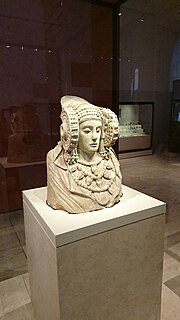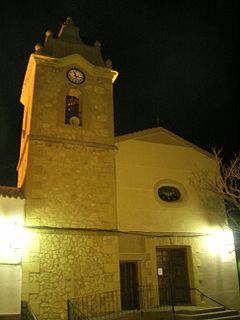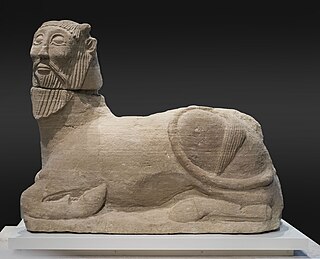
Colombia, officially the Republic of Colombia, is a transcontinental country largely in the north of South America, with territories in North America. Colombia is bounded on the north by the Caribbean Sea, the northwest by Panama, the south by Ecuador and Peru, the east by Venezuela, the southeast by Brazil, and the west by the Pacific Ocean. It comprises 32 departments and the Capital District of Bogotá, the country's largest city.

Francisco Franco Bahamonde was a Spanish general who led the Nationalist forces in overthrowing the Second Spanish Republic during the Spanish Civil War and thereafter ruled over Spain from 1939 to 1975 as a dictator, assuming the title Caudillo. This period in Spanish history, from the Nationalist victory to Franco's death, is commonly known as Francoist Spain or the Francoist dictatorship.

Spain, officially the Kingdom of Spain, is a country in Southwestern Europe with some pockets of territory across the Strait of Gibraltar and the Atlantic Ocean. Its continental European territory is situated on the Iberian Peninsula. Its territory also includes two archipelagos: the Canary Islands off the coast of North Africa, and the Balearic Islands in the Mediterranean Sea. The African enclaves of Ceuta, Melilla, and Peñón de Vélez de la Gomera, makes Spain the only European country to have a physical border with an African country (Morocco). Several small islands in the Alboran Sea are also part of Spanish territory. The country's mainland is bordered to the south and east by the Mediterranean Sea except for a small land boundary with Gibraltar; to the north and northeast by France, Andorra, and the Bay of Biscay; and to the west and northwest by Portugal and the Atlantic Ocean respectively.

Spanish or Castilian is a Romance language that originated in the Iberian Peninsula of Europe and today is a global language with nearly 500 million native speakers, mainly in Spain and the Americas. It is the world's second-most spoken native language, after Mandarin Chinese, and the world's fourth-most spoken language, after English, Mandarin Chinese and Hindi.

The Spanish–American War was an armed conflict between Spain and the United States in 1898. Hostilities began in the aftermath of the internal explosion of USS Maine in Havana Harbor in Cuba, leading to U.S. intervention in the Cuban War of Independence. The war led to the U.S. emerging as predominant in the Caribbean region, and resulted in U.S. acquisition of Spain's Pacific possessions. That led to U.S. involvement in the Philippine Revolution and ultimately to the Philippine–American War.

The Spanish flu, also known as the 1918 flu pandemic, was an unusually deadly influenza pandemic caused by the H1N1 influenza A virus. Lasting from February 1918 to April 1920, it infected 500 million people – about a third of the world's population at the time – in four successive waves. The death toll is typically estimated to have been somewhere between 17 million and 50 million, and possibly as high as 100 million, making it one of the deadliest pandemics in human history.

The Iberians were a set of people that Greek and Roman sources identified with that name in the eastern and southern coasts of the Iberian peninsula, at least from the 6th century BC. The Roman sources also use the term Hispani to refer to the Iberians.

The Spain national football team has represented Spain in international men's football competition since 1920. It is governed by the Royal Spanish Football Federation, the governing body for football in Spain.

The Lady of Baza is a famous example of Iberian sculpture by the Bastetani. It is a limestone female figure with traces of painted detail in a stuccoed surface that was found on July 22, 1971, by Francisco José Presedo Velo, at Baza, in the Altiplano de Granada, the high tableland in the northeast of the province of Granada. The town of Baza was the site of the Ibero-Roman city of Basti and, in one of its two necropoleis, the Cerro del Santuario, the Lady of Baza was recovered. She is seated in an armchair, and an open space on the side is thought to have contained ashes from a cremation.
The Oretani or Oretanii were a pre-Roman ancient Iberian people of the Iberian Peninsula, that lived in northeastern Andalusia, in the upper Baetis (Guadalquivir) river valley, eastern Marianus Mons, and the southern area of present-day La Mancha.

Mexico, officially the United Mexican States, is a country in the southern portion of North America. It is bordered to the north by the United States; to the south and west by the Pacific Ocean; to the southeast by Guatemala, Belize, and the Caribbean Sea; and to the east by the Gulf of Mexico. Mexico covers 1,972,550 square kilometers (761,610 sq mi) and has approximately 128,649,565 inhabitants, making it the world's 13th-largest country by area, 10th-most-populous country, and most populous Spanish-speaking nation. It is a federation comprising 31 states and Mexico City, its capital city and largest metropolis. Other major urban areas include Guadalajara, Monterrey, Puebla, Toluca, Tijuana, Ciudad Juárez, and León.

Spanish art has been an important contributor to Western art and Spain has produced many famous and influential artists including Velázquez, Goya and Picasso. Spanish art was particularly influenced by France and Italy during the Baroque and Neoclassical periods, but Spanish art has often had distinctive characteristics, partly explained by the Moorish artistic heritage in Spain, and through the political and cultural climate in Spain during the Catholic Counter-Reformation and the subsequent eclipse of Spanish power under the Bourbon dynasty in the 19th century.

The National Archaeological Museum is a museum in Madrid, Spain. It is located on Serrano Street beside the Plaza de Colón, sharing its building with the National Library.

San Pedro, Albacete is a municipality in Albacete, Castile-La Mancha, Spain. It has a population of 1,319. It is located 36 kilometers from Albacete. Nearby towns: Pozuelo, Balazote or Casas de Lázaro.

The Spanish Civil War was a civil war in Spain fought from 1936 to 1939. Republicans loyal to the left-leaning Popular Front government of the Second Spanish Republic, in alliance with anarchists, of the communist and syndicalist variety, fought against a revolt by the Nationalists, an alliance of Falangists, monarchists, conservatives and traditionalists, led by a military group among whom General Francisco Franco soon achieved a preponderant role. Due to the international political climate at the time, the war had many facets and was variously viewed as class struggle, a war of religion, a struggle between dictatorship and republican democracy, between revolution and counterrevolution, and between fascism and communism. According to Claude Bowers, U.S. ambassador to Spain during the war, it was the "dress rehearsal" for World War II. The Nationalists won the war, which ended in early 1939, and ruled Spain until Franco's death in November 1975.

The Bicha of Balazote is an Iberian sculpture that was found in the borough of Balazote in Albacete province, Spain. Carlos Fuentes has called it the "Beast of Balazote." The sculpture has been dated to the 6th century BCE, and has been in the National Archaeological Museum of Spain in Madrid, since 1910.

Madrid is the capital and most-populous city of Spain. The city has almost 3.3 million inhabitants and a metropolitan area population of approximately 6.5 million. It is the second-largest city in the European Union (EU), surpassed only by Berlin, and its monocentric metropolitan area is the second-largest in the EU, surpassed only by Paris. The municipality covers 604.3 km2 (233.3 sq mi).

Fernando Díaz de Mendoza y Aguado was a Spanish actor, impresario and theatre director. According to some critics he was one of the twentieth century's best actors.

Don Juan O'Donnell y Vargas (1864–1928) was an influential Spanish politician of Irish heritage.

The COVID-19 pandemic in Spain is part of the pandemic of coronavirus disease 2019 caused by severe acute respiratory syndrome coronavirus 2. The virus was first confirmed to have spread to Spain on 31 January 2020, when a German tourist tested positive for SARS-CoV-2 in La Gomera, Canary Islands. Post-hoc genetic analysis has shown that at least 15 strains of the virus had been imported, and community transmission began by mid-February. By 13 March, cases had been confirmed in all 50 provinces of the country.























